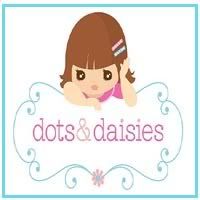 |
| source |
When Stella and I have hit an afternoon slump and the grumpy moods begin to surface, my favourite way to overcome this is to crank the volume of some pop tunes and have a silly dance with her. She giggles and wriggles like a little star and I feel refreshed and de-stressed, ready to tackle 'arsenic hour'.
I had Kathleen write to me recently asking to guest post, which is quite fitting considering our new-found afternoon tradition. I found her article a happy, innovative read and hope that you do too! ...enjoy...
Healthy Bodies Make Happy Hearts
By Kathleen ThomasWith the invention of computers, video games and electronic toys children have become increasingly less active. Childhood obesity and the need for more physical activity are increasingly critical issues in both Australia and America. One way you can encourage your children to become more physically active is by dancing!
The Australian and American Heart Association recommends that children ages two and older participate in at least 30 minutes of moderate to vigorous physical activity every day. Dance is a simple activity that doesn’t require complicated equipment and can be done just about anywhere.
“I recommend dance as a fun physical activity for the whole family because it doesn’t require a lot of time, money or resources,” said Dr. Mary Zurn, vice president of education for Primrose Preschools “Dancing is a creative form of self-expression that helps build self-confidence. Plus, it provides time well spent with your family.”
Dr. Zurn and Dr. Steve Sanders, a fitness expert and Director of the School of Physical Education & Exercise Science at the University of South Florida as well as a member of the Primrose Education Advisory Board, recommend these tips to encourage your family to start dancing:
Step 1: Select appropriate music. You aren’t just looking for age-appropriate lyrics. It is also important to find music with an eight-count beat that isn’t too fast or too slow, so children can successfully develop movements in time with the music.
Step 2: Create a dance routine with your child. Together, decide how your dance will begin, what movements will go in the middle and how it will end. Children naturally respond to music with movement, which they can then turn into a dance. They love to pretend and don’t have any difficulty responding if they are asked to “be” the wind moving in the trees or even a dog searching for a place to bury a bone. Their imaginations don’t need much encouragement to get moving.
Step 3: Focus on developing your child’s key motor skills. Freestyle dancing is great for getting the heart rate up, but dancing can also be beneficial to your child’s motor and coordination development. Dancing will enable them to practice fundamental skills like jumping, landing, leaping, sliding, galloping, moving forward and backwards, and learning how to imitate moves.
Step 4: Check your child’s heart rate. Teach your child to connect physical activity with maintaining a healthy heart by measuring his or her heart rate. Show your child how to feel and count his or her heart beats.
For more tips from Dr. Z and a variety of activity suggestions, visit www.DrZandMe.com.
















No comments:
Post a Comment